Apr 10. 2025 - Latest News
The School of Innovation and Creative Design at Southern University of Science and Technology (hereinafter referred to as “the School of Design”) focuses on innovation and practice in the interdisciplinary field of “design + technology + industry.” It is committed to using design research to inspire industry, transforming cutting-edge technology into the future of industry, and promoting inclusive innovation through design. Recently, research findings from the research teams led by Assistant Professors JE Seungwoo Zhu, Xuelian Li, Pengcheng An, and Mirna Zordan at the School of Design were accepted by the ACM CHI conference on Human Factors in Computing Systems, with a total of 10 papers accepted, including 7 full-length papers.

The ACM CHI conference on Human Factors in Computing Systems is the top international academic conference in the field of human-computer interaction. Compared to other computer science conferences, CHI is large in scale and places greater emphasis on the interaction between humans and technology, exploring innovative interaction methods, the application of emerging technologies in the real world, and the social impact and ethical considerations of technology use. CHI is classified as a Class A conference by the Chinese Computer Federation (CCF) and as an A* (flagship conference) by the Core Conference Ranking. It consistently ranks first in the overall rankings of journals and conferences in the field of human-computer interaction on Google Scholar, with an H-5 index of 129 (2025 data). Papers presented at CHI are widely recognized for their high quality and impact. This year's conference maintained the same level of selection rigor as previous years, with 5,014 full-length papers submitted for review, and ultimately 1,249 papers accepted, resulting in an acceptance rate of 24.9%.
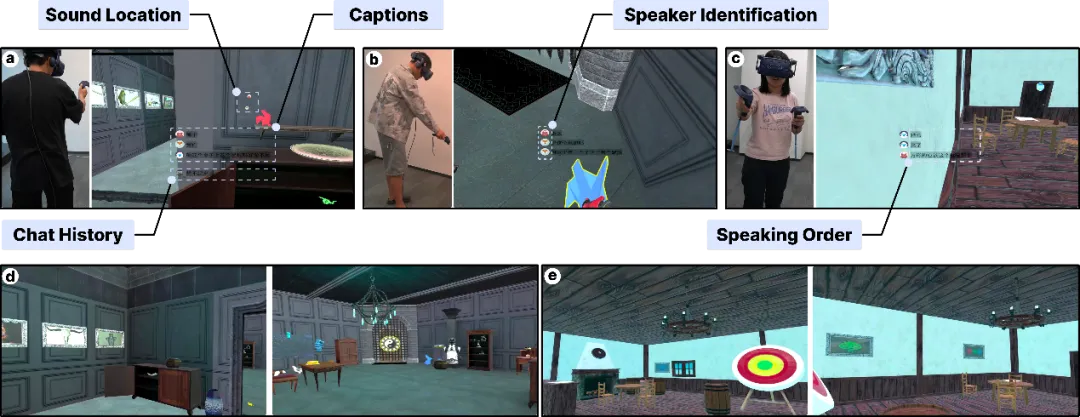
Tianze Xie†, Xuesong Zhang†, Feiyu Huang, Di Liu, Pengcheng An, Seungwoo Je*
Accessing auditory information remains challenging for DHH individuals in real-world situations and multiplayer VR interactions. To improve this, we investigated caption designs that specialize in the needs of DHH users in multiplayer VR settings. First, we conducted three co-design workshops with DHH participants, social workers, and designers to gather insights into the specific needs of design directions for DHH users in the context of a room escape game in VR. We further refined our designs with 13 DHH users to determine the most preferred features. Based on this, we developed VRCaptions, a caption prototype for DHH users to better experience multiplayer conversations in VR. We lastly invited two mixed-hearing groups to participate in the VR room escape game with our VRCaptions to validate. The results demonstrate that VRCaptions can enhance the ability of DHH participants to access information and reduce the barrier to communication in VR.
(† Co-First Author, * Corresponding Author)
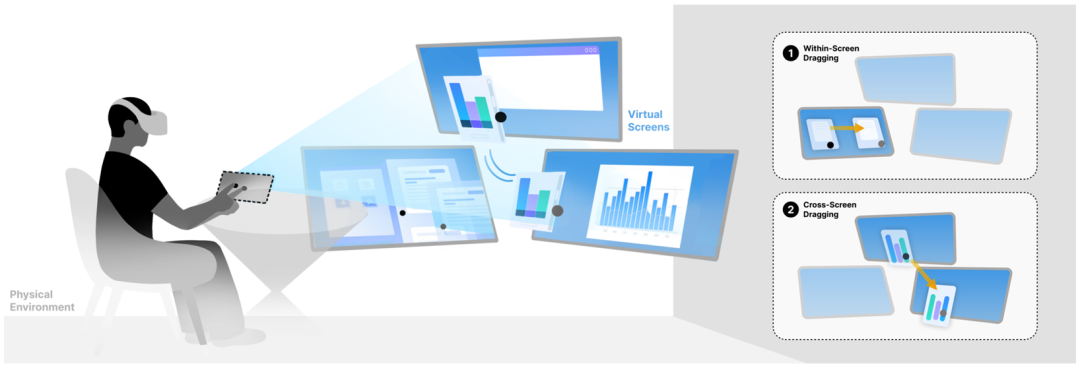
Han Shi, Hanzhong Luo, HyeonBeom Yi, Seungwoo Je*
The advancement of Virtual Reality (VR) has expanded 2D user interfaces into 3D space. This change has introduced richer inter action modalities but also brought challenges, especially the lack of haptic feedback in mid-air interactions. Previous research has explored various methods to provide feedback for interface inter actions, but most approaches require specialized haptic devices. We introduce haptic retargeting to enable users to control multiple virtual screens in VR using a simple flat pad, which serves as a single physical proxy to support seamless interaction across multiple virtual screens. We conducted user studies to explore the appropriate virtual screen size and positioning under our retargeting method and then compared various drag-and-drop methods for cross-screen interaction. Finally, we compared our method with controller-based interaction in application scenarios.
(* Corresponding Author)

Han Shi, Seungwoo Je*
The use of haptic and visual stimuli to create body illusions and enhance body ownership of virtual avatars in virtual reality (VR) has been extensively studied in the fields of psychology and Human Computer Interaction (HCI). However, previous studies have relied on mechanical devices or corresponding proxies to provide haptic feedback. In this paper, we applied haptic retargeting to induce body illusions by redirecting users’ hand movements, altering their perception of the shape of body parts when touched. Our technique allows for the realization of more precise and complex deformations. We implemented mapping of the ear’s contour, thereby creating illusions of different ear shapes, such as elf ears and dog ears. To determine the scope of retargeting, we conducted a user study to identify the maximum tolerable deviation angle for virtual ears. Subsequently, we explored the impact of haptic retargeting on body ownership of virtual avatars.
(* Corresponding Author)
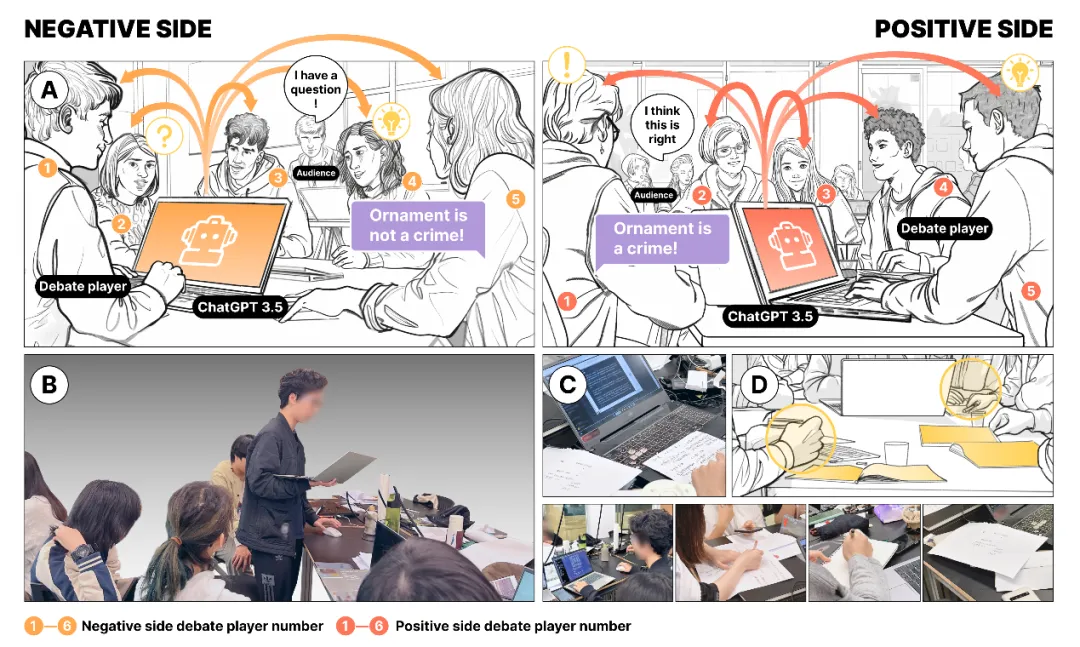
Zihan Zhang, Black Sun, Pengcheng An*
This research focuses on classroom debates, a highly interactive learning scenario, and deeply explores collaborative patterns between learners and large language models (LLMs). Through observing and analyzing human-AI interactions during debates, the study highlights the positive roles of AI tools in reducing learners' social anxiety, breaking communication barriers, and providing scaffolding for beginners. At the same time, it identifies potential risks such as information overload and cognitive dependency, offering significant implications for the future design of human-computer interaction educational tools.
(* Corresponding Author)

Runhua ZHANG, Jiaqi GAN, Shangyuan GAO, Siyi CHEN, Xinyu WU, Dong CHEN, Yulin TIAN, Qi WANG*, and Pengcheng AN*
In this study, we designed and evaluated ProcrastiMate, a serious game to help players learn about procrastination. By addressing the key design challenge —balancing personal relevance with psychological distance—ProcrastiMate allows players to deeply engage within the in-game context and to gain insights regarding their own procrastination without feeling judged. Our paper demonstrates how to break the procrastination cycle with game-based educational approaches, and offers design implications on how to avoid cognitive dissonance when having individuals approach topics where they might feel criticised or vulnerable, such as mental health challenges (e.g., anxiety, depression, addiction).
(* Corresponding Author)
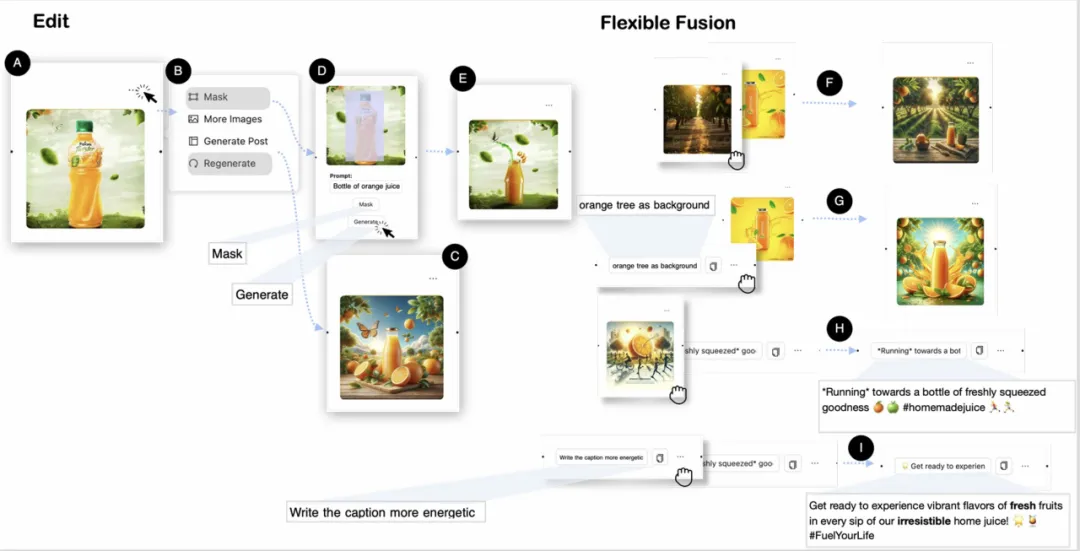
Xuye Liu, Annie Sun, Pengcheng An, Tengfei Ma, Jian Zhao*
Creating promotional posts helps users share creativity and grow communities or micro-businesses, but it's often challenging for design novices. We introduce Influencer, an AI-powered interactive tool that supports fast ideation and quality post creation. It offers image and caption suggestions, brand-aware design exploration, flexible content fusion, and a mind-map-style interface. Our user study and case analyses show that Influencer effectively helps novices create diverse, engaging promotional content with ease.
(* Corresponding Author)

Bolin Lyu, Zhuying Li*, Pengcheng An, Josh Andres
Dreams support emotional and cognitive health, yet few tools exist for daily engagement. We present LumaDreams, a mobile app using generative AI to help users sketch and write about dreams, transforming them into positive images and stories. In a 14-day user study, LumaDreams fostered emotional and cognitive shifts, strengthened daily empowerment, and revealed how users built trust in AI-supported dream transformation.
(* Corresponding Author)

Xi Zhang, Jiakun Pei, Chuisong Chen, Seungwoo Je, Mirna Zordan*
For the "oldest old" living in Long-Term Care facilities, declining physical and cognitive abilities often make it challenging to engage in social interactions with other residents. This paper presents a bio-feedback system as a technology probe that allows four users to visualize their breathing and synchronize with each other to trigger social interactions through their bodies. This interactive breathing-based system shows great potential as a technology-mediated intervention deployable in LTC environments.
(* Corresponding Author)
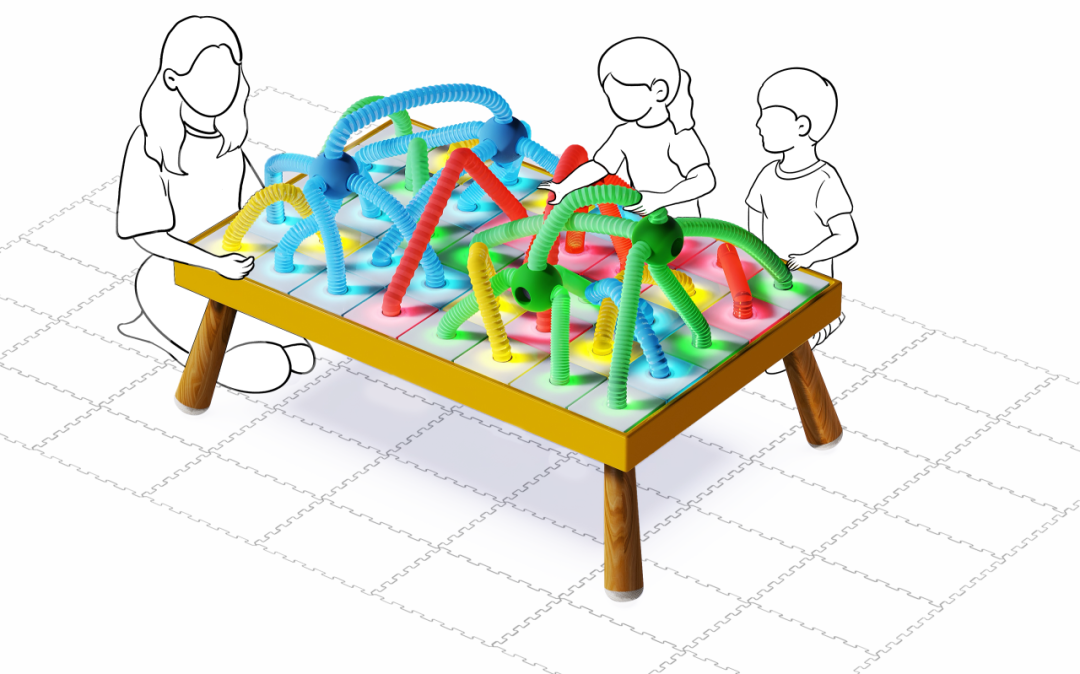
Kezhuo WANG, Rui QI, Yafei GE, Pengcheng AN, Xueliang LI*
In autism-specific classrooms, there exist few educational tools specifically designed to support the children in learning through play. Inspired by sandplay, building blocks, and sensory toys commonly seen in special education and rehabilitation therapies for children with autism, we design RainbowForest. This design is composed of a platform table, modular blocks with color sensors and built-in LEDs, and colorful retractable tubes, offering a unique playful experience of "multisensory sandplay." RainbowForest can engage children with special needs in the structured play of color-matching as well as free play driven by their own interests. Teachers can incorporate this tool into their teaching activities by setting new rules to the play aligned with specific learning objectives. This study was made possible with the support of the teachers and students from Shenzhen Zhuxiang School, to whom we are deeply grateful.
(* Corresponding Author)
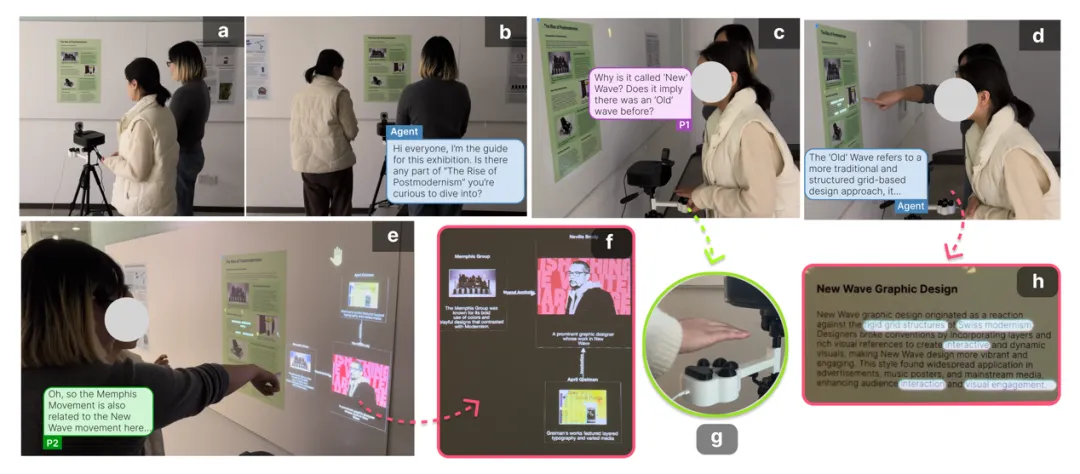
Kexin HUANG †, Jiaqi JIANG †, Huiying LU, Hanqin ZHOU, Pengcheng AN*
We propose Visiobo, an embodied guide agent for poster exhibitions that supports multi-user interaction through voice and information enhancement (cueing and concept mapping). The user study with 12 participants demonstrated that the system enables personalized interaction, supports information location and confirmation, provides expanded content, fosters shared understanding among viewers, and enhances the learning experience.
(† Co-First Author, * Corresponding Author)
Contributors: Zou Qianyuan
Reviewed by: Seungwoo Je、Li Xu

Oct 28. 2021 - Latest News

Oct 16. 2024 - Latest News

Jan 6. 2021 - Latest News